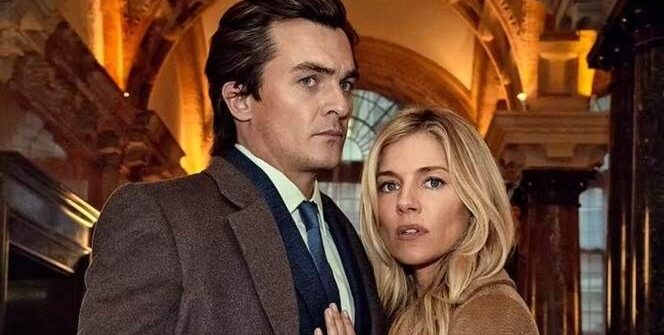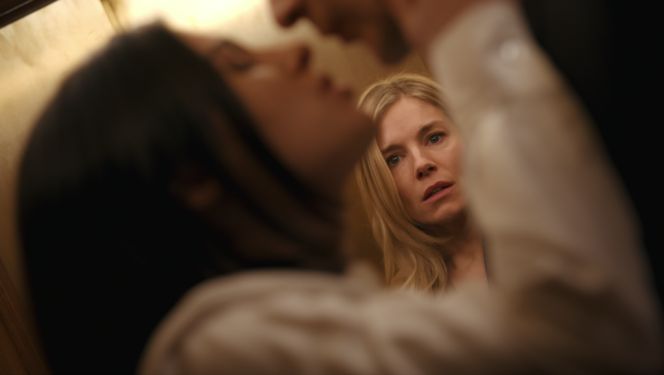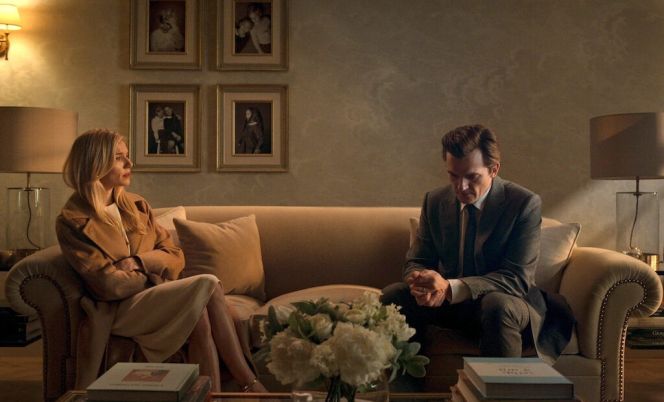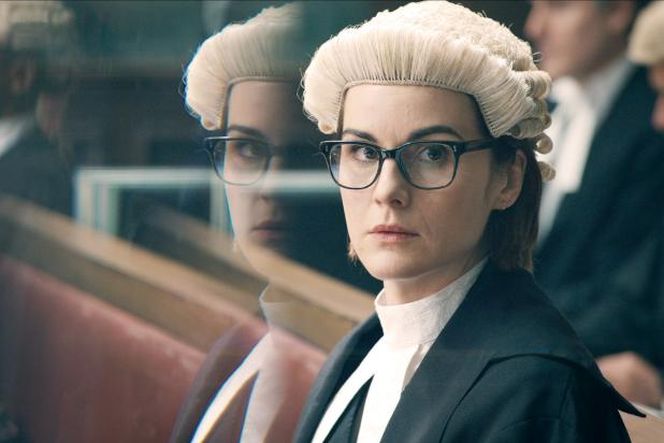SERIES REVIEW – This highly stylish and extremely snobbish miniseries is part erotic thriller, part exposé of social issues, and the main focus is the oft-used story thread of #metoo. Although the series is never dull, thanks to the twists and turns and the various timelines, the somewhat poorly developed characters and the plethora of clichés mean that the series never strays from mediocrity.
Thanks to today’s television, trying to find your way through the endless amount of content and trying to figure out what’s worth watching in the first place is often a game in itself. Netflix’s The Anatomy of a Scandal (adapted from Sarah Vaughan‘s book) sought to ‘revisit’ the recently very fashionable #metoo problem, capitalising on the trend for the twisty, soap-opera thriller. Still, the end result is an overall mediocre, shallow and cheesy miniseries, only enhanced by a few aspects.
Although the episodes themselves attempt to line up all the right ingredients for good storytelling – political intrigue, the maintenance of privilege among the rich and elite, the complicated power differential between boss and employee in a relationship, tense courtroom dynamics – the series as a whole fails to put these pieces together in a way that gives the plot the weight the creators intended it to have.
The first season of the planned anthology series follows the trial and social downfall of a prominent British politician, James Whitehouse (Rupert Friend) – who seems to be living the perfect life in his marriage to his old college sweetheart Sophie (Sienna Miller) and the family they have created with their two children. But when he is about to introduce a new amendment to a pending immigration bill, scandal erupts: James is having an affair with Olivia Lytton (Naomi Scott), a young employee in his office. Although the Whitehouses are initially prepared for the upcoming tabloid storm, there is a darker side to the professional misconduct that has been uncovered: we soon learn that Olivia has also accused James of raping her. As the case goes to court, Kate Woodcroft (Michelle Dockery), a skilful and competent prosecutor, prepares to hold James accountable for his alleged crimes – but as the trial begins, it becomes clear that the series is not only focusing on events of the past few months, but also on what these current events unearth from each of the central characters’ pasts.
Two different perspectives
The Anatomy of a Scandal manages to illustrate the confused nature of memory – and how, all too often, one person’s memory of an event can diverge wildly from what the other person remembers. The first half of the series’ six episodes play out how the initial affair between James and Olivia began when they both agreed to have physical contact both in and out of the office. Still, after their break-up, their final encounter, a spontaneous moment of passion in an elevator, veered into territory that they both had very different perceptions of. From Olivia’s point of view, James has most certainly crossed the line into violence. Still, James reacts to his former lover’s accusation with seemingly genuine confusion and strong defensiveness in many cases. They are both firmly convinced of what happened, although consent was dubious at best in this scenario. Still, Olivia’s case is so convincing that even Sophie questions everything she thought she knew about her husband as the trial progresses.
Perhaps unsurprisingly, it is in the courtroom where The Anatomy of a Scandal is most interesting. Director S.J. Clarkson approaches the possibly mundane reality of the testimonies with creative ingenuity, blurring the boundaries between past and present thanks to some clever set pieces and quick cuts – such as when Olivia returns from a flashback to answer Kate’s question before the scene flashes back to the present moment, or when she exits the infamous elevator where the crime occurred and takes her seat in the courtroom in one continuous, uninterrupted movement. However, these slightly arty but clever tricks are often overshadowed by other cinematic choices that undermine the weight of the scene, such as the excessive use of tilting camera angles and blurred edges that only add to the sense of anxiety rather than intrigue, which, despite the rather mediocre acting, are somewhat captivating.
The prosecutor is the most exciting character
However, after a particular turning point in the narrative, The Anatomy of a Scandal moves significantly away from focusing on Olivia’s story and becomes an afterlife of the story in favour of all the other characters around her – and none of the three characters at the centre of it are compelling enough to merit focus or sustained attention. Friend assumes a degree of hubris in his portrayal as someone who has thoroughly enjoyed the benefits of wealth and social standing at Oxford and beyond, but the script stops at too many points to cast Whitehouse as a villain, which results in him coming across as a two-dimensional, evil avatar of white male privilege rather than a genuinely developed, complex character.
Miller, meanwhile, tragically has even less to do as James’s indulgent wife Sophie, who is mainly deployed as a reactive, passive presence to heighten the drama of the court trial. There is quite an exciting contrast between Kate’s more collected professional demeanour and the character’s deepest emotional expressions when seen in her private life. The only actress who does slightly better than them is Michelle Dockery.
When brevity is an advantage…
Perhaps the most significant advantage that Scandal’s Anatomy has in its favour is its brevity; at just six episodes, the series, fortunately, has enough interesting narrative threads to keep viewers engaged until the end, so it never bores the viewer for a minute. That said, the series also has a relatively weak ending, which may make the viewer wonder if it was worth the time at all.
-BadSector-
Anatomy of a Scandal
Direction - 5.8
Actors - 5.4
Story - 5.6
Visuals/Music/Sounds - 6.4
Ambience - 5.8
5.8
MEDIOCRE
Perhaps the most significant advantage that Scandal's Anatomy has in its favour is its brevity; at just six episodes, the series, fortunately, has enough interesting narrative threads to keep viewers engaged until the end, so it never bores the viewer for a minute. That said, the series also has a relatively weak ending, which may make the viewer wonder if it was worth the time at all.


















Leave a Reply